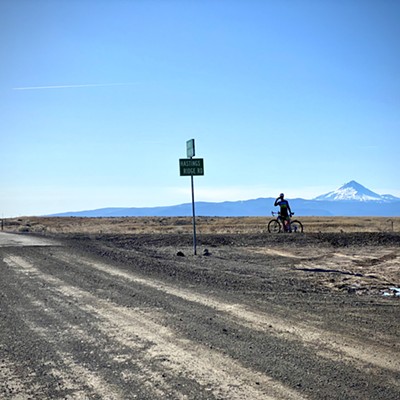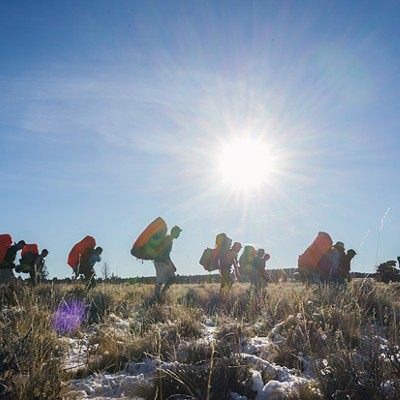Back in the early '60s I began placing U.S. Fish and Wildlife #9 bands on the legs of golden eagle nestlings. I had been climbing into-and-out-of eagle nests in Deschutes, Lake, and Jefferson counties from about 1953, trying to learn more about their diet, territory, mortality, and natural history.
I found nestlings and adults shot in the nest, then I discovered both bald and golden eagles dead near 1,080 poison stations all across the Great Sandy Desert and Fort Rock District of the Deschutes National Forest, and along the highways.
It would probably be okay of I stopped there and said, "The rest is history," but I cannot. There are events taking place today that are still killing eagles and owls unnecessarily, and it not only bothers me, but also one of my good pals, raptor-rehabber, Gary Landers, who sent me this:
"Today, September 6, 2015, I recovered the carcass of the probable mate to another dead golden eagle I picked up previously. A witness observed the eagle struck by a truck on Hwy 126 at Deep/Dry Canyons. The eagle was dead, laying beside the highway when I arrived, killed near a perch site identified by BLM Prineville as frequented by the Fryrear Butte pair. It appears both adult GOEA's from the Fryrear Breeding Area have been killed by human activity in less than three months."
If there is one factor involving motor vehicles that I learned early on it's, "Speed kills." Period, exclamation point!
Wrecks on our highways today—this very moment—are confirmations of that fact, and that dead owl I'm holding is also. It didn't have a chance. The excessive speed of automobiles and trucks on Highway 20 is outside any common sense. Deer are smashed into hamburger by speeding motorists, as well as owls, hawks, and eagles. And just recently, a speeding pickup took out one of the power poles along the same highway.
In the '60s, I was receiving several eagle band returns in winter from birds killed on Highway 31, near the deer winter range area. Looking the eagles over it was obvious some were killed from a direct blow to the head and body, but several had signs of some kind of prolonged, physical punishment.
A physics teacher explained how and why after a talk on raptors I was giving at OMSI. It seems when a truck is going down the highway at a high rate of speed a vacuum is formed all around the trailer. An eagle, feeding on a road-killed deer on the highway, would leap from the carcass as it sensed the approaching truck, but couldn't get far enough, and consequently falls into the vacuum, strikes the side of the truck again and again, and finally is thrown clear.
Our President at that time was Lyndon B. Johnson, who lowered the speed limit to 55 mph on federal highways to save fuel, and Richard Nixon went along with it when he became President. After that took place, I didn't get as many road-killed eagle returns from the banding lab in winter—shooting and electrocution moved to the top. It was as simple as the nose on your face: Speed kills.
Over the last year, I have picked up more-than-usual, dead, great horned owls and hawks along Highway 20 between Sisters and Bend, all of them pulverized like the one in the photo, skulls crushed, wings smashed, and in some cases, the cranium so severely crushed, brains were sprayed all over the body.
About once a week I have to swerve to the shoulder of Highway 20—just past the Fryrear curve on my way to Bend—to avoid a head-on-collision with some speeder who has to pass in that on-coming passing lane, no matter who's coming from the opposite direction.
Look at all the fuel that's wasted as we allow speeders to roar past us on the highway, just so they can get somewhere a little faster. Look at those oxygen-stealing fumes that stink so badly as those speeders go roaring by. Gary says he's in favor of five-dollars-a-gallon fuel tax, he thinks that might slow some of them down; I'm with him.
Now, in their infinite wisdom, our state legislature is considering raising the speed limit, while at the same time, law enforcement and safety specialists are wondering why there are so many devastating wrecks on the highway, and why so many people are dying because of them.
The people who pass me on Highway 20 going well over 70 mph may be part of that explanation. I know for sure they're the ones who are pulverizing owls catching rodents and eagle feeding on carrion.
The reason that mouse is still clutched in the talons of that dead owl is because once the talons are locked closed, sudden death will not release them. But the real tragedy isn't just another dead owl—a bird that eliminates thousands of mice in its lifetime—now more rodents are left to spread diseases.


























